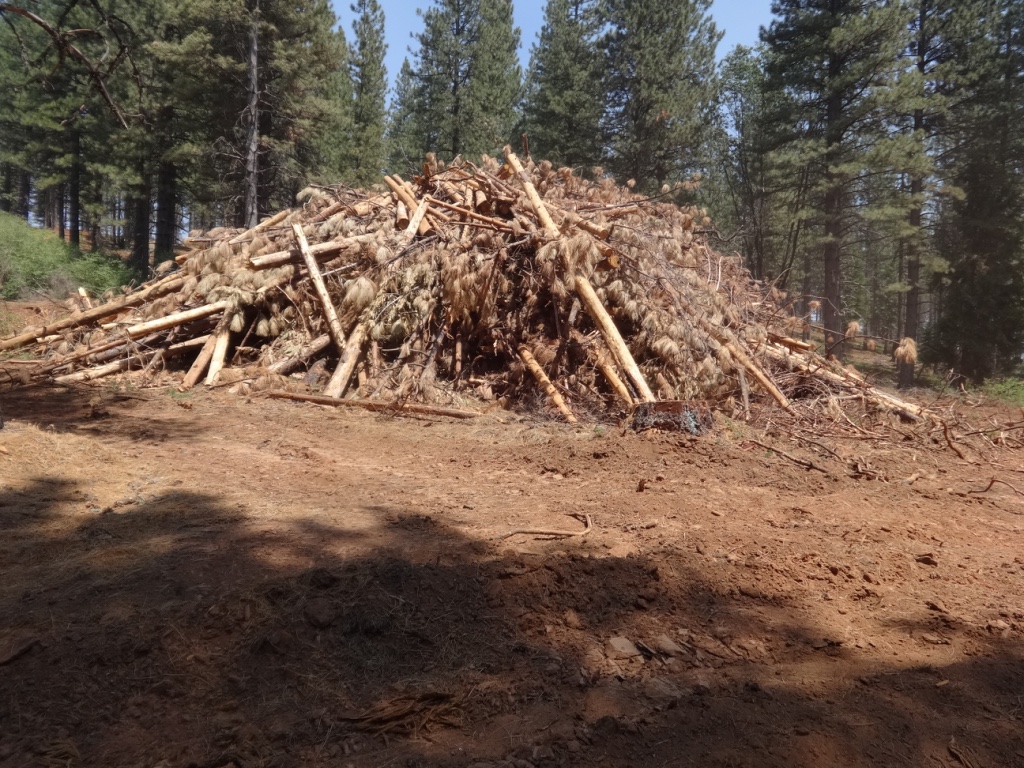At a time when so many giant fires are consuming vast areas of forest habitat and killing so many large oaks and conifers, CSERC continues to press for science-based thinning logging and prescribed burning projects that can greatly reduce the severity of wildfires. As our staff does forest monitoring, we frequently find large “slash” piles of waste wood left from thinning projects, or the cutting of hazard trees along roads, or the removal of small diameter trees that can act as a “ladder fuels” to carry surface fires up into the crowns of trees.
One Forest Service forester shared that, just within the Stanislaus Forest, there are more than 1,000 large piles that will be burned - there in the forest - without any filtering of the air quality contaminants. In contrast, when transportation costs are low enough, those huge waste wood piles can be chipped, and the chips can be trucked to biomass plants where filters remove the vast majority of air pollutants when the chips are burned.
Yet instead of praising the Forest Service for trying to minimize air pollution by selling the waste wood chips to biomass plants, some environmental groups have railed against biomass removal as a supposed threat to the forests. They misleadingly claim that biomass removal won’t leave enough snags or down logs for wildlife. In reality, there are more than 100 million recently dead trees shown by aerial surveys that are scattered across the region. In addition every USFS project is required to leave an average of 4 or more snags per acre. A second misleading claim from biomass opponents is that biomass removal contaminates air quality. In reality, the piles will either be burned in the open with no filtering of pollutants, or the same wood will be burned far more cleanly at biomass cogeneration plants – where burning actually creates electricity, as well. One way or the other, the waste wood will be burned. It makes sense to burn it as cleanly as possible.
CSERC strongly supports biomass removal due to the benefits to air quality and the extremely unnatural amount of small woody material that has built up in public forests due to a century of fire suppression. When conservation groups fight beneficial forest projects (such as biomass removal) based on misinformation, it can lead to agency decision-makers broadly categorizing environmental input as unfounded and irrelevant.


